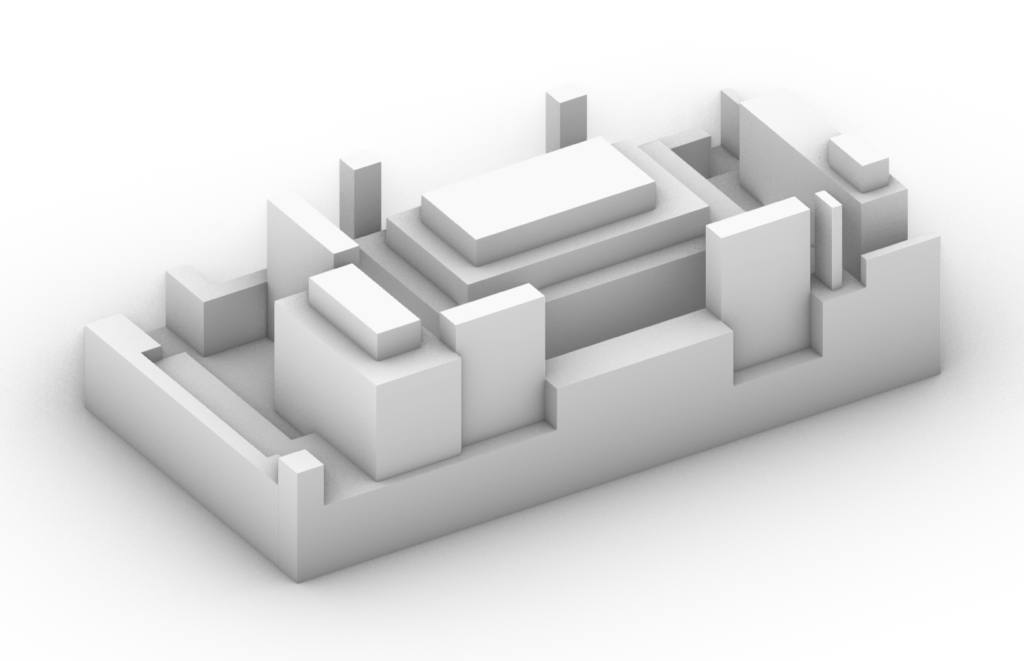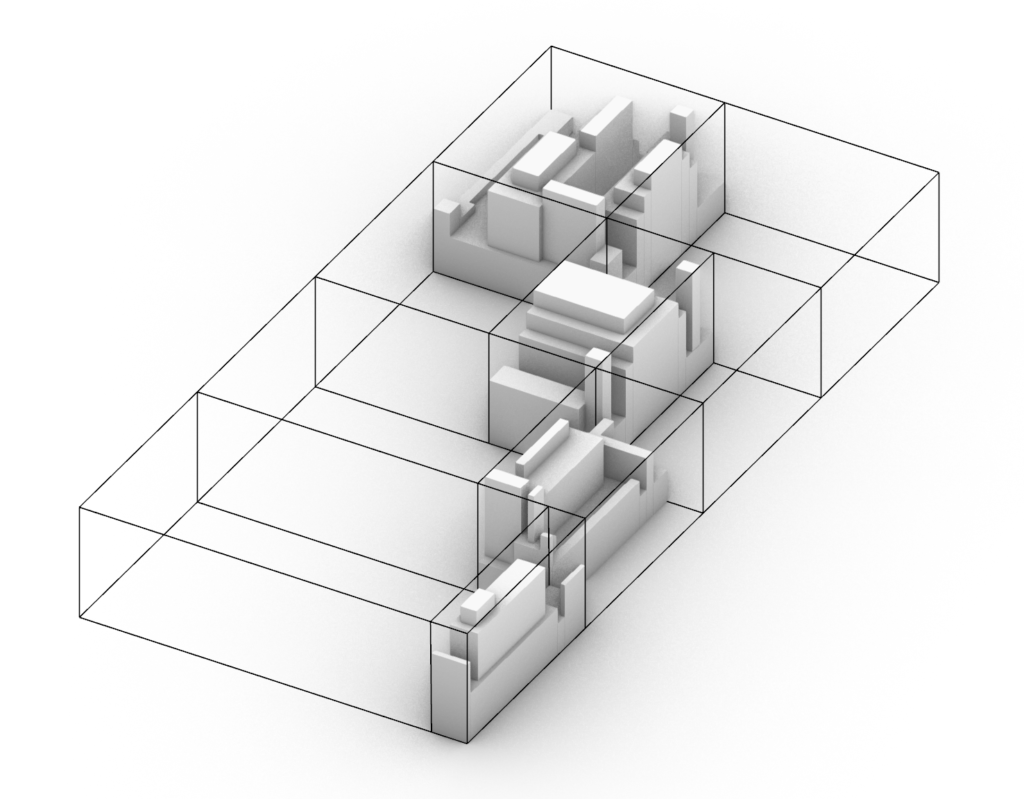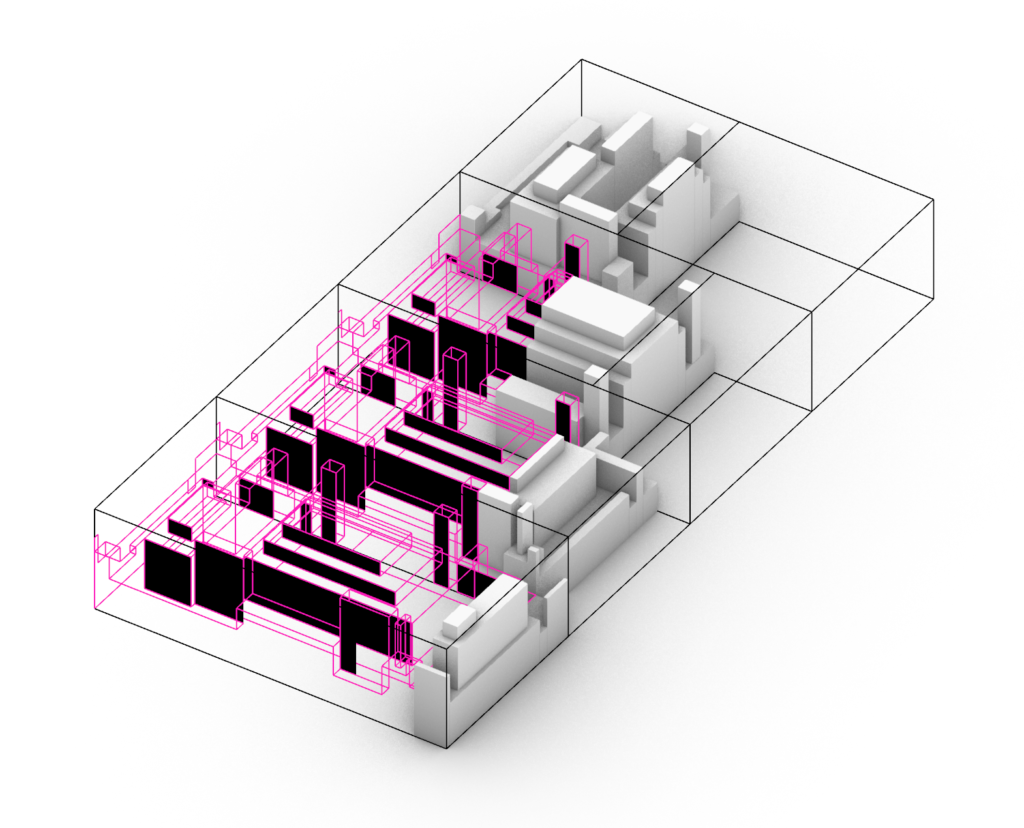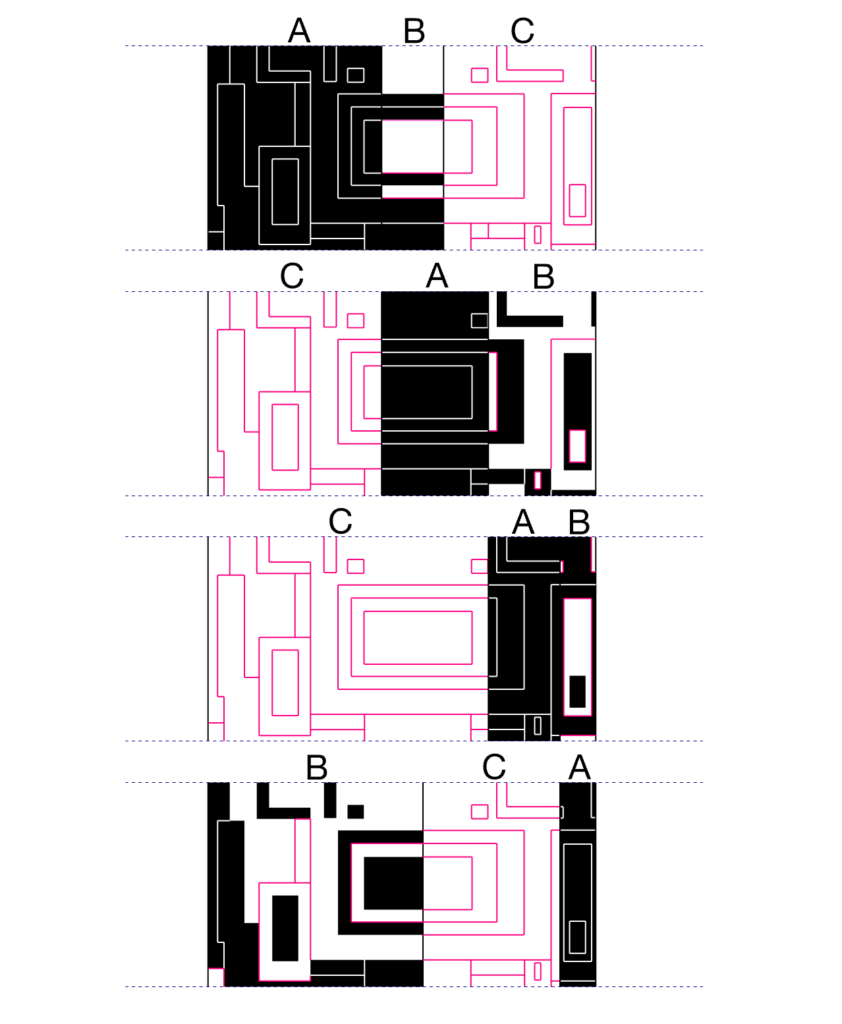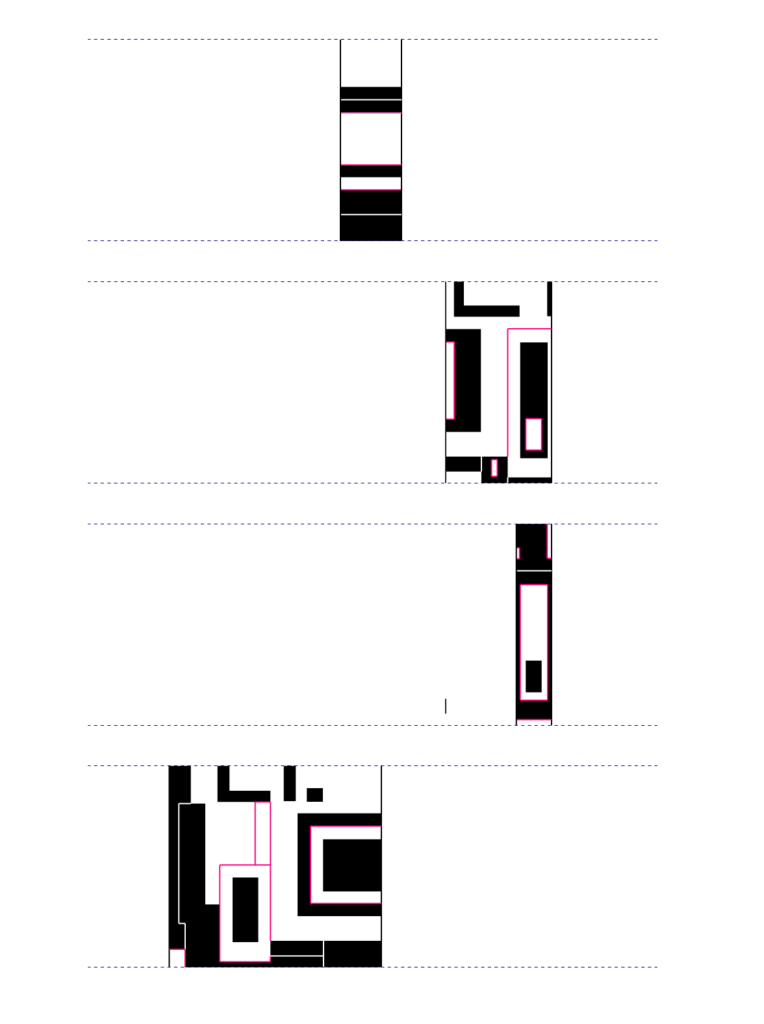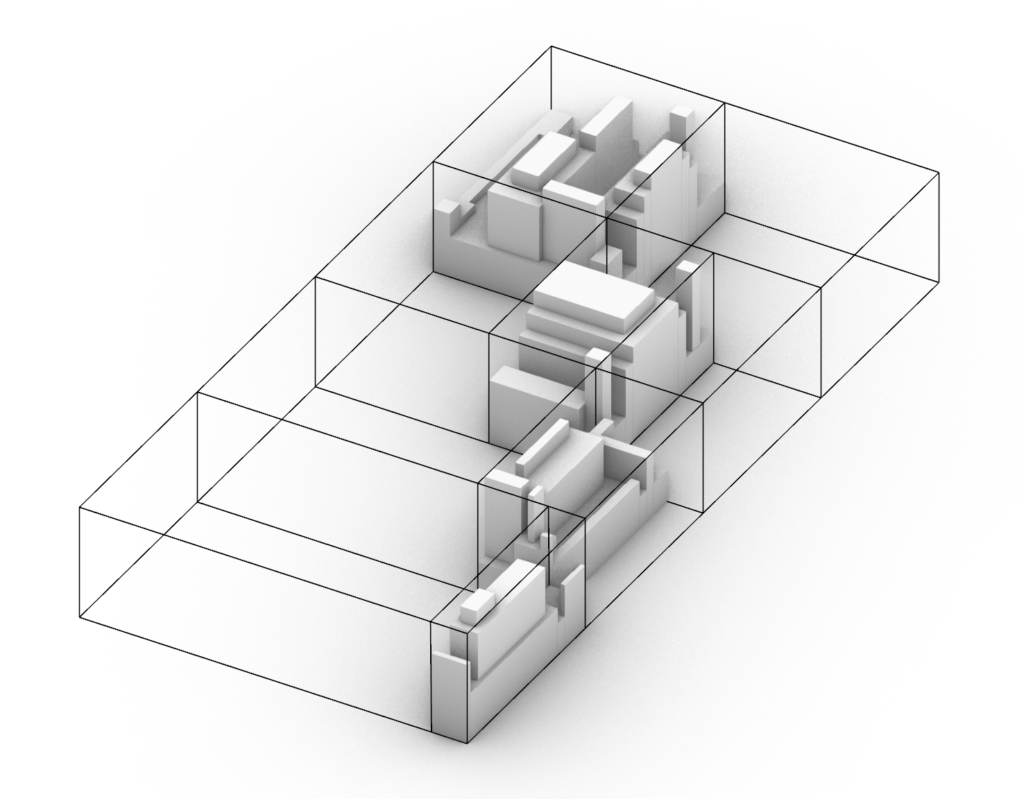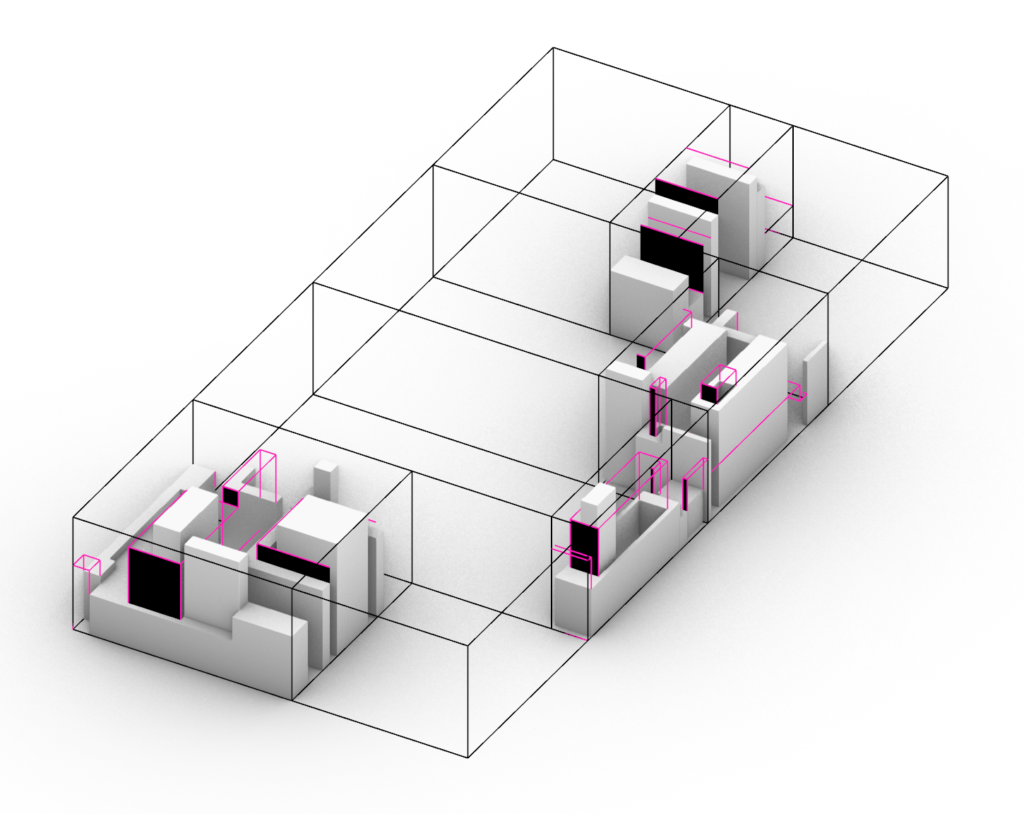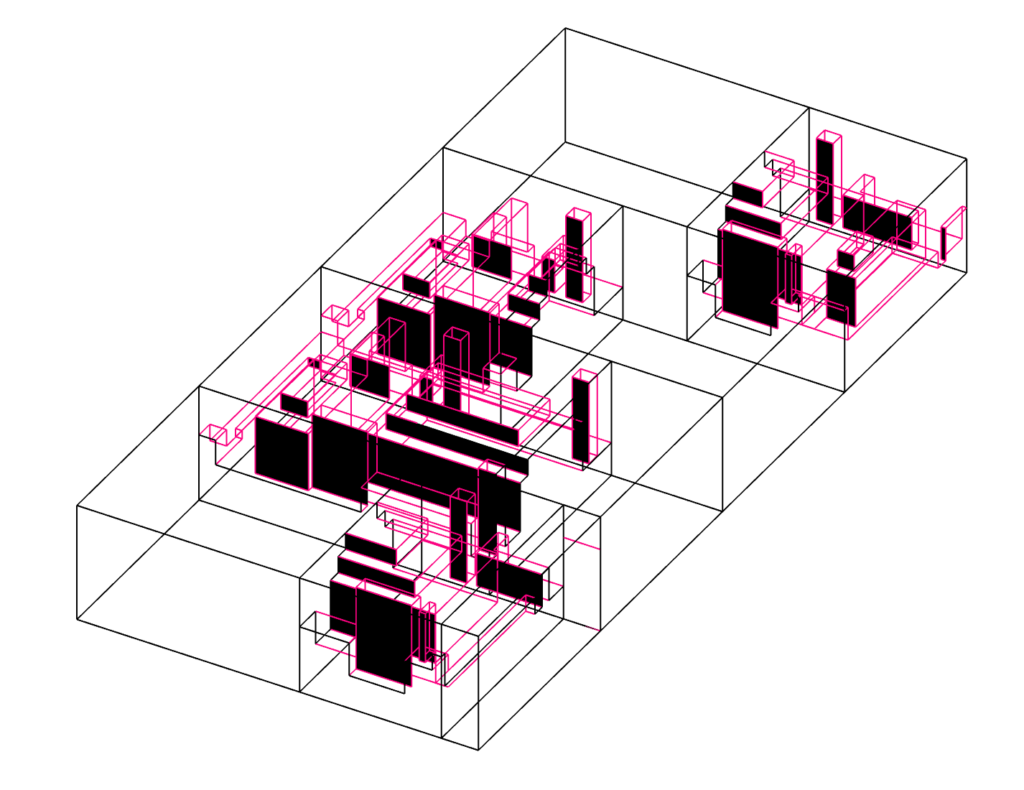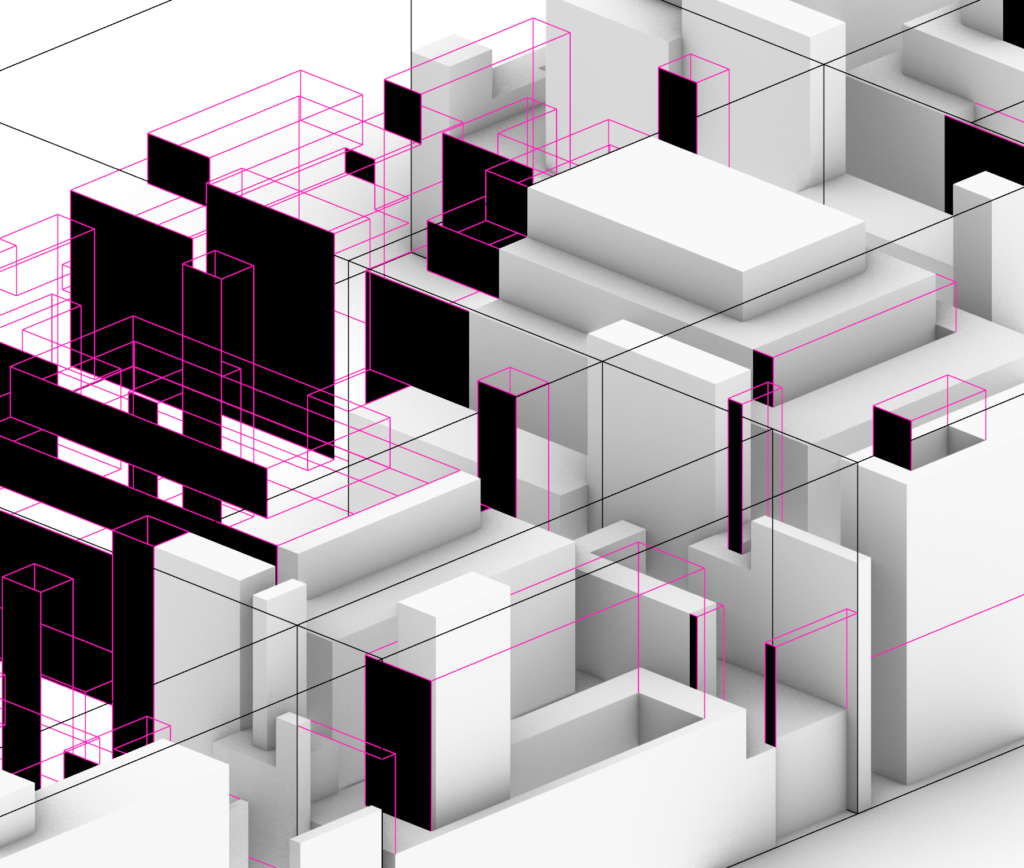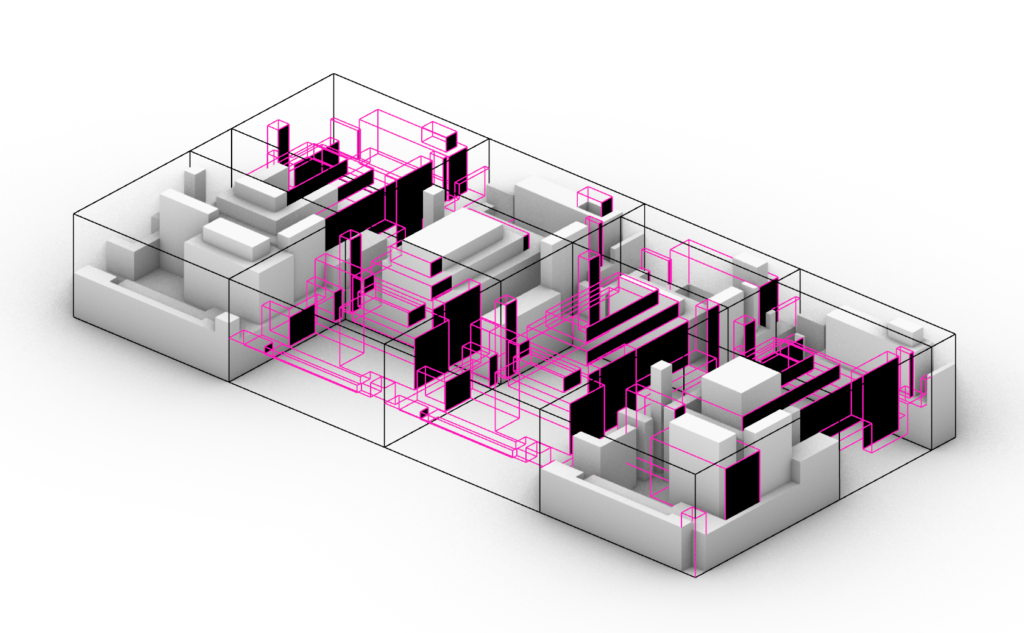Presentation
Initially approaching this project, I found that Sergei Eisenstein’s theories on montages to be the ones that I would incorporate into my project. I took a section of the plan that I made for one of my case studies (the Oakland Museum) and tried to apply these ideas to it.
Eisenstein is known for his five types of montage with each having their own characteristics, and the one I found most interesting was rhythm. Unlike metric or other forms of montage, rhythm combines the concept of time with with movement seen in shots to dictate how the cut is made.
To better understand this concept relative to the three dimensional object I made, I hatched all individual parts on the plan that extruded significantly higher than or stood out from their surroundings.
Since the object was busier in the rightward direction, I decided to made the cuts smaller as we move to the right, using Eisenstein’s idea of rhythm in which the cut of the shot is has to be relative to the movement in the shot, creating a sense of compositional and visual continuity.
Each section represents a shot and to show how each shot is compositionally relative to each other, I decided to have wire frames of the previous sections accompany the following ones in this manner bellow.
As I was doing this, I noticed a pattern. The solid part along with the void and the wireframe made an ABC pattern, the solid being A, wireframe being B, and void being C as in the diagram bellow.
After noticing the pattern that the relationship between each frame is creating, I decided to further define it creatively by turning the void zones into buffer zones in which both the wireframe and the solid coexist harmoniously.
Through the progression of this design, I realized that I was essentially communicating Eisenstein’s idea of a montage, which in a sense of a film would be a series of images that are used as a collective to communicate complex ideas. Taking a section from the Oakland Museum plan, I separated it into different frames (boxes), each having a different sized shot (cut of the object) of its own relative to its density. Then I communicated the different zones created, in order to communicate a greater idea, which is the ABC pattern.
Below are more pictures to help you understand my designs.



